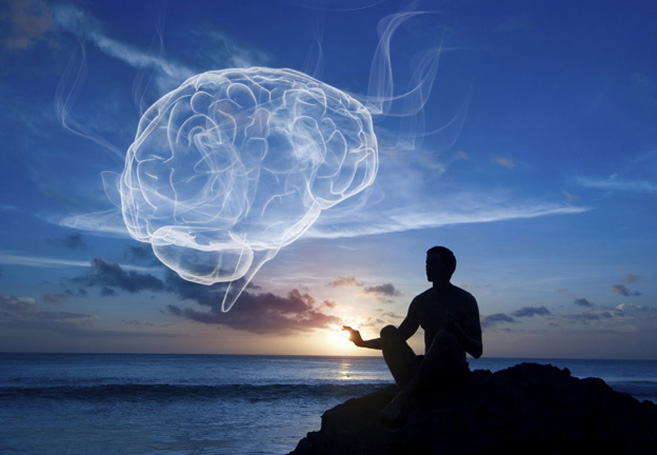Dr. Richard Davidson is one of the world’s foremost experts in the study of the neural mechanics of emotion and well-being in the human brain. Based at the University of Wisconsin-Madison, Davidson is the William James and Vilas Professor of Psychology and Psychiatry; Director of the Waisman Laboratory for Brain Imaging and Behavior, as well as the Laboratory for Affective Neuroscience; and is Founder and Chair of the Center for Investigating Healthy Minds, at the Waisman Center.
Davidson received his Ph.D. from Harvard University in Psychology, and since 1984 he has based his research at UWM. He has published over 275 articles, chapters and reviews, and has edited 13 books. He is also the author of The Emotional Life of Your Brain and The Mind’s Own Physician, and blogs at RichardJDavidson.com.
As Davidson explains, “Research in my labs is focused on cortical and subcortical substrates of emotion and affective disorders, including depression and anxiety. We study normal adults and young children, and those with, or at risk for, affective and anxiety disorders. We use quantitative electrophysiology, positron emission tomography and functional magnetic resonance imaging to make inferences about patterns of regional brain function. A major focus of our current work is on interactions between prefrontal cortex and the amygdala in the regulation of emotion in both normal subjects and patients with affective and anxiety disorders.”
Recently, Davidson delivered a fascinating lecture in January 2016 for the Greater Good Science Center, in which he explains the four constituents of well-being. These constituents are rooted in four specific brain circuits that exhibit neuroplasticity, which gives us the opportunity to enhance our well-being with practice. He points out how nearly all neuroscientific research and discovery into well-being always end up coming back to these 4 circuits. In much the same way that society awakened in the 1950s to the importance of fitness to human health and rebuilding our plastic bodies, we are now experiencing a similar awakening into the power we each have in rebuilding our plastic brains in order to maximize our well-being. In exactly the same way we can learn a new instrument, the following are the 4 neural circuits of well-being which can each be trained, rebuilt, maximized, and harnessed:
1. THE RESILIENCE CIRCUIT: Resilience is the rapidity with which you recover from adversity. Research has found that people who have a more rapid return to baseline in their resilience circuitry are protected by the adverse consequences of life’s slings and arrows. Of all four of the well-being circuits, the resilience circuitry requires the most amount of time to train: results in this circuit’s plasticity begin to show after approximately 6,000-7,000 hours of practice. It is most definitely the Yoda circuit.
2. THE POSITIVE OUTLOOK CIRCUIT: One has a healthy and robust positive-outlook circuitry when they are: able to see and recognize the positive in others, as well as the ability to savor positive experiences. People with depression, for instance, have positive-outlook circuitry that burns out too quickly and does not last. This is one of the four circuits which can be rebuilt the most quickly. Brain scans of participants who engage in kindness-loving meditation show extraordinarily rapid rebuilding of this circuit, with long-lasting effects.
3. THE ATTENTION CIRCUIT: A wandering mind is an unhappy mind. One famous Harvard study used cell phone text messaging to monitor the headspace of a huge number of participants several times a day. The study found an average of 47% of an adult’s waking life is spent not paying attention to what they’re doing. The ability to harness this circuit has powerful and longterm abilities in restructuring judgement, character, and will.
4. THE GENEROSITY CIRCUIT: When people engage in altruistic behavior and activate the neural circuitry of generosity, it is akin to a personal revolution in the brain. Impressively, the circuitry of generosity has the most visible and transformative plasticity of all four circuits.
NUMEROUS TECHNIQUES & TRAINING EXERCISES FOR THESE 4 CIRCUITS CAN BE FOUND IN DAVIDSON’S BOOK The Emotional Life Of Your Brain, AS WELL AS IN HIS PROFILE IN The Boston Globe.
Most of the time we are allowing our brains to be shaped unwittingly. If we can snap out of this lazy fog and take back control of our brains we can harness the full power of these 4 circuits to maximize our own personal well-being. As Davidson points out time and time again — well-being is a skill that can be learned and mastered. In exactly the same way we can dedicate ourselves to learn a new instrument with enough motivation, we can also train the 4 well-being instruments in each of our brains. In other words, it’s time to harness the full power of the billion dollar quartet sitting atop your shoulders. Or, for you car lovers out there — if you owned a Lamborghini, Ferrari, Aston Martin, and a Porsche 911 — you’d be crazy to let them sit in the garage collecting dust. To learn more about where to find professional, affordiable, and convenient counseling, be sure to visit BetterHelp.
.
.


